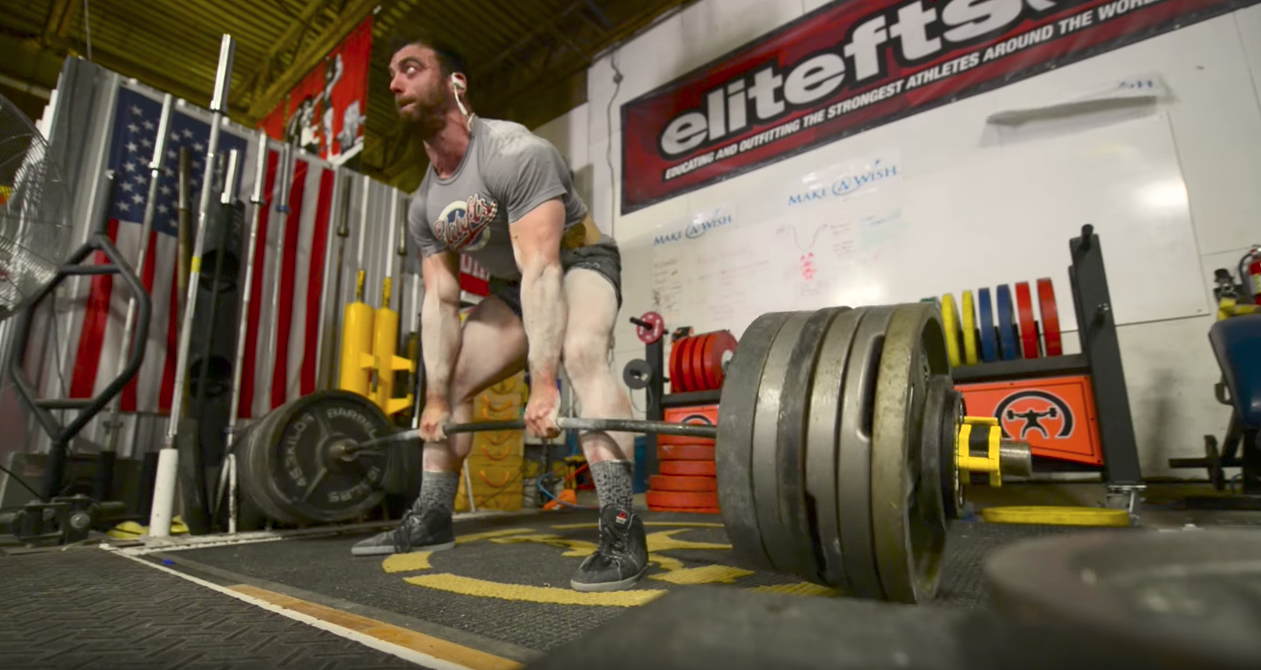
Lessons from UGSS June 2017
Earlier this month I had the opportunity to visit the EliteFTS headquarters, meet Dave Tate, and train with the best of the best for two awesome days. When I started lifting, EliteFTS became my BIble, and so it was literally a dream come true to take part in UGSS. Sappiness aside, I learned a lot from everyone there, and in future articles, I’ll share some exercises, technique changes, and other insights I learned.
In this article, though, I want to focus on a conversation I had with Dave Tate. It was early on a Saturday morning, and I was still trying to shake off my sleep and jet lag while I waited for the Spike to kick in, but what he told me has been stuck in my head ever since.
Powerlifting is Changing
Dave explained to me that powerlifting is changing. Back when he and Traci were still building the company into what it is today, equipped lifting ruled. In fact, for the most part, equipped was all there was -- records, meets, the whole thing. Today, obviously, raw training is growing quickly, and is arguably more popular than equipped lifting. If you’re interested in that aspect, I’ve written an academic article titled “Shifting Gear: A Historical Analysis of the Use of Supportive Apparel in Powerlifting,” and a quick Google search should find it for you.
But Dave wasn’t talking about records or meets or even training, per se: he was talking about teamwork. If you’re lifting equipped, he explained, you have to train with a team, or at least a partner -- it’s physically dangerous and practically impossible to do otherwise. So you’d see five or six or eight guys sharing a rack, platform, bar, whatever.
Nowadays, at least for raw lifters, that’s not strictly necessary, and if you’re like me and many other powerlifters, you’re probably a little antisocial anyway. Gym time is your time, an escape, and you don’t want to share it with anyone else, whether that be a training partner, teammates, even just friends.
But that’s a mistake.
Tacit Versus Formal Knowledge
My own training partner, Dominic Morais, has written about the difference between tacit and formal knowledge. Formal knowledge is book learning -- the stuff you read, in the classroom or online, or are taught by an instructor, professor, or coach. Tacit knowledge is different. It includes all those little tips, tricks, techniques -- all the little nuances of training -- that you learn just from being around others, from observing their habits and mannerisms, and experimenting yourself.
In the strength and conditioning field especially, there’s a HUGE gap between tacit and formal knowledge. If you’re an exercise science student, you’re already aware of this: the training methodologies you read about in the classroom don’t often reflect what you’d prefer to incorporate in your own training. The difference between breathing and bracing is a great example: you can read about spinal alignment, intra-abdominal pressure, or whatever else, but often it won’t really click until you feel your body bracing properly, or see someone else in the gym set up for a heavy squat. It’s actually hard to give many such examples, because if I can write about it (whatever “it” is), it it no longer constitutes tacit knowledge -- it’s formal.
You Need To Change, Too
So what does all that mean? It means you need to change your shit up. I could give plenty of examples of times I’ve walked into a gym and seen a whole row of squat racks and platforms taken up by people training on their own, instead of together. Now, if the gym time is primarily your means of mental escape, then embrace your solitude. But if your primary goal is to get bigger and stronger, you’re only cheating yourself by training alone.
And by training alone, I don’t just mean training next to other people -- I mean training with them. There’s a monumental difference between training on a platform next to someone and sharing a barbell with that person. The former isn’t paying attention to what you’re doing, how you’re feeling, or how your weights are moving. Even if you have a coach, training partners often can provide insights that just aren’t apparent unless you’re in the thick of things. Maybe the barbell you’re using is uneven, or you’ve got a mislabelled plate on one side. Or maybe you just need a kick in the ass. Trust me: it’s way, way harder to make excuses when you know the next guy or girl up after you is going to put more weight on the bar.
Getting Strong(er)
I have to say, there’s nowhere I’ve ever seen teamwork exhibited more than at UGSS. It’s one thing to read about “Live, Learn, Pass On,” and it’s another to see it in action. It was so great to finally meet Sheena, Andy, Steve and Dave in person, and to train with guys like Christian Anto, Matt Mills, Mario D’Amico, Bryan Doberdruk, JP Carroll, and Nate Harvey, and girls like Meana Franco, Dani Overcash, and Julia Ladewski. It’s a privilege and an honor to be a part of this team, and I wouldn’t give it up for anything, and this past weekend has inspired me to become better.








